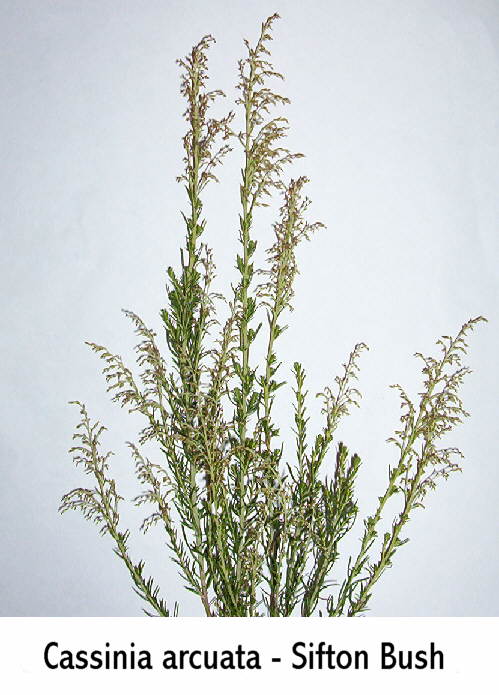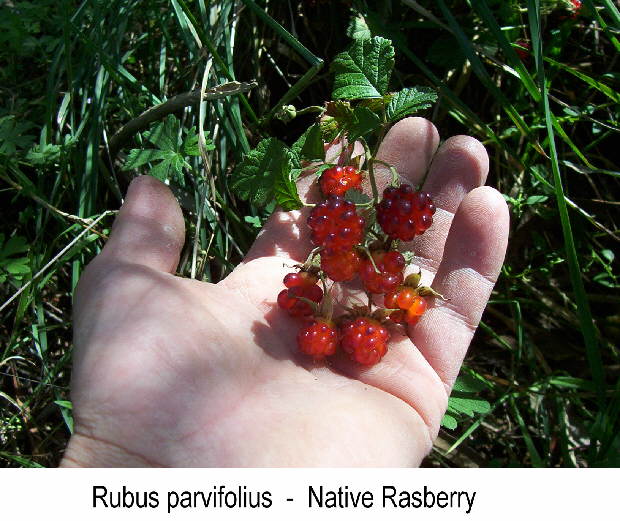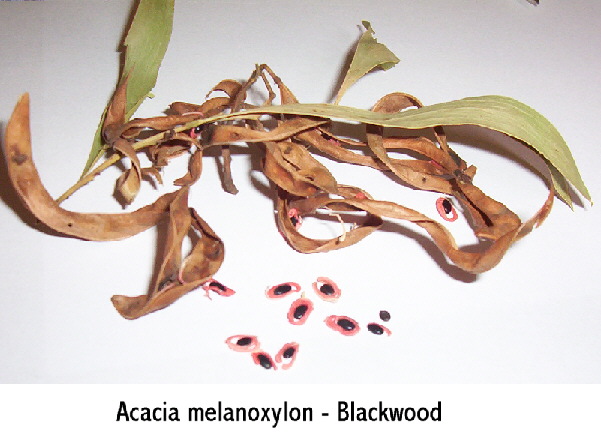
Wild Windellama
by Paul Alessi
April 2005
A mixed bag this month with one
weed, one bush tucker and one
timber species but relevant to this time of year in Windellama.
Sifton Bush (Cassinia arcuata)
Common in Windellama but rarely a problem weed in this part of
the shire.
Sifton Bush is the only native plant listed on our council
declared weeds
list, it is also known as Chinese Tea Shrub. I'm not sure if you
can make
a cuppa out of it but the leaves have a very fragrant smell when
crushed.
There are 3 or 4 species of Cassinia in Windellama and Cassinia
arcuata
is not the only one that takes advantage of freshly cleared
ground. It is a
woody plant and can be quite attractive in appearance with fine
green leaves
on upward reaching stems that gracefully weep from the top when
in flower
and seed which is February through to April. In flower the plant
tops are pale green, then turn
golden brown as the seeds are set. The seeds are very light and
blow
in the wind.
The fact that a native plant can
be declared a noxious weed in it's native
habitat is more than a little unusual, basically this means if
the letter
of the law was followed by all landholders the species could be
made extinct,
as unlikely though that would be it's always a good way to get a
conversation going with the weeds inspector.
In areas with balanced
ecosystems, Sifton Bush seems to be kept in check by
natural control mechanisms like kangaroos, wombats and insects,
but in more
disturbed and open country it can dominate.
There are many pioneer species,
and anyone that has cleared some new ground in
Windellama will know that one plant species or another will
usually take advantage
of the disturbance and rapidly reproduce.
Sifton bush is more likely to be
a problem after clearing ground with poor fertility.
Native Rasberry (Rubus parvifolius)
Very similar to and quite often mistaken for Blackberry, the
native Rasberry is
great bush tucker, usually in fruit from February to April but
unlike the Blackberry
the fruit is ripe and ready for eating when it is red and never
turns black. Native Rasberry
can often be found growing alongside Blackberry, but is much more
delicate
in all it's features, the spines and leaves are smaller and the
plant on a whole
usually less vigorous but the fruit is great to eat, maybe a
touch less sweet and more watery
than a Blackberry but still a good treat and not likely to take
over your paddock.
It is quite often found scrambling over rocks or in areas of
better moisture like creek banks.
Blackwood (Acacia melanoxylon)
One of Australia's great furniture timbers and a member of the
hickory Wattle family.
The feathery juvenile leaves are lost very early in life and it
develops leaves called phyllodes
that resemble a Eucalypt's leaf shape. It is easy to identify
when in seed which is usually in
February to April as the twisted bean like seed pods have small
(around 2mm) hard black
seeds twice encircled by a bright red thread like structure
called a funicle.
Crushing the leaves or seed pods
will give off a dust or vapour that can cause sneezing,
watering eyes and loss of breath and Blackwood is probably either
similar to or one of the
species that Aborigines used to stun fish in waterholes by
placing some of the prepared
plant material in the water, I'm not sure what the chemical
process is to make this all happen
but maybe it is by depleting the oxygen available to the fish. On
it's own in the
bush it is a totally harmless, attractive small tree and is a
common understory species
of our better forests in NSW, Vic and Tasmania where it can grow
to 30 metres high
and be a useful size as a saw log. Many Australian antique
furniture pieces are
made of Blackwood and are of excellent quality.
The only places I have found
Blackwood growing in Windellama is along the Budjong and
Nerrimunga Creeks in small numbers and the odd roadside plant
closer to Tarago but is
bound to occur elsewhere and could quite likely be a good farm
forest tree for moister fertile soils.
Thank you for the positive
comments and feedback received so far, I can be contacted on
48445149 or palessi@tpgi.com.au



Copyright Paul Alessi 2005